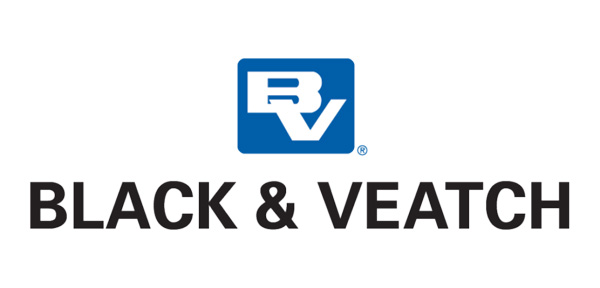Accelerating a survey of 30,000 assets with mobile GIS
Working on behalf of UK Power Networks, Black & Veatch succeeded in surveying 30,000 assets, over an area of 29,000 km2, in just six weeks using a mobile GIS solution from Esri. The project led to cost savings of over £130,000, delivered high quality asset information and improved the tracking of surveyors in the field.
Black & Veatch delivered the massive project exceptionally quickly to provide good customer service
The use of mobile GIS created cost savings for Black & Veatch, its customer and its sub-contractor
Safety was improved through better tracking of field-based survey teams
The Challenge
As part of a wide-ranging initiative to minimise health and safety risks, the electricity distribution network operator UK Power Networks needed to assess and improve the condition of 47,000 cable pits, spread throughout London, the South and South East. It therefore appointed the integrated consulting and construction business Black & Veatch to verify the locations of these underground assets and provide it with the accurate information required, to help inform its planned maintenance programme.
Black & Veatch initially employed a paper-based process, in which ten back-office administrators printed and sorted maps, collated the handwritten notes from surveyors and typed the data into spreadsheets. However, following the completion of the first 17,000 cable pit visits, Black & Veatch was convinced that this traditional survey approach simply wasn’t sufficient for the enormous scale of the task.
ArcGIS enabled us to do, in weeks, a project that might otherwise have taken years
Paul Hart – information management specialist, Black & Veatch
The Solution
Taking advantage of its existing Enterprise License Agreement for Esri’s ArcGIS platform, Black & Veatch used out-of-the-box technology to create a mobile GIS app. The proof of concept took just half a day to build, and was subsequently refined after demos with internal teams, the sub-contractor and UK Power Networks. “In total, it took us just six days to put the mobile GIS solution together,” recalls Paul Hart, information management specialist at Black & Veatch.
Next, Black & Veatch developed a new survey method for the UK Power Networks project, by combining the mobile GIS app with other new and existing GIS solutions from the Esri ArcGIS platform. In summary, Black & Veatch used ArcGIS to:
- Determine the priority order for cable pit inspections, based on risk & safety factors, such as distance from the gas mains
- Send job allocations automatically to the tablets used by eleven surveying teams
- Allow field-workers to locate cable pits, photograph them and describe their condition using tablets
- Convey survey data from the tablets via 3G to a web map on ArcGIS Online, without the need for any further data entry
- Monitor the progress of inspections in real-time via Esri’s ArcGIS Operations Dashboard
- Export lists of cable pits for a partner organisation that doesn’t use GIS yet, using ArcGIS for Excel.
Our use of ArcGIS will enable us to offer future clients a highly cost-competitive service, as well as deliver a faster and higher quality survey result
Paul Hart – information management specialist, Black & Veatch
The Benefits
The use of mobile GIS for this cable pit survey project – in conjunction with web and desktop GIS solutions – has benefited not only Black & Veatch, but also its client and sub-contractor.
Fast and effective customer service
Using the new GIS-based survey method, Black & Veatch was able to survey the remaining 30,000 cable pits in just six weeks, enabling it to deliver a fast and effective service for its customer, UK Power Networks. “We wouldn’t have been able to even print 30,000 maps in six weeks using the traditional survey method, let alone visit 30,000 sites,” Hart says. “ArcGIS enabled us to do, in weeks, a project that might otherwise have taken years.”
Substantial cost savings
Black & Veatch estimates that its use of GIS has saved UK Power Networks in excess of £130,000, by reducing the amount of time crews might potentially waste going to the wrong streets and attempting to locate cable pits that are no longer there. Within its own business, Black & Veatch made additional cost savings by removing eight to ten back office administration roles and eliminating the need to print tens of thousands of paper maps and forms. Furthermore, Black & Veatch’s sub-contractor benefitted financially, by being able to plan survey journeys more effectively and reduce parking fines.
Better tracking of field workers
The use of Esri’s Operations Dashboard gave managers at Black & Veatch and UK Power Networks up-to-the-minute visibility of the progress that surveyors were making. “Using our previous survey method, it took around a week before we knew which cable pits had been visited,” Hart says. “With our new approach, we could go online, at any time, to see exactly how many cable pits each team had visited. We could also see the current locations of survey teams, improving safety for our sub-contracted surveyors.”
Improved data quality
While accelerating its survey process, Black & Veatch simultaneously improved the quality of the information that it collected for UK Power Networks. For instance, it was able to photograph cable pits for the first time, capturing over 29,500 location-referenced images. This improved asset data will help UK Power Networks to plan future maintenance activities more effectively and speed up the implementation of measures to mitigate potential hazards on British streets.
Strong competitive advantage
In 2015, the mobile GIS app won Black & Veatch’s Innovation Award and, ever since, Hart has been receiving requests for demonstrations from potential new clients. He says, “Our use of ArcGIS will enable us to offer future clients a highly cost-competitive service, as well as deliver a faster and higher quality survey result.”



